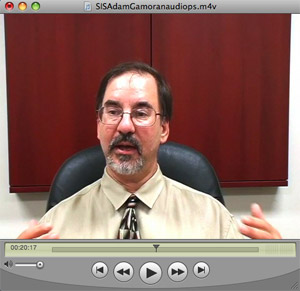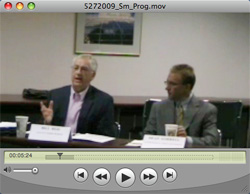The New York Times reports that the Stamford, Connecticut public schools may finally achieve the goal of eliminating academic tracking, putting students of mixed academic ability in the same classes at last. The Times reports that “this 15,000-student district just outside New York City…is among the last bastions of rigid educational tracking more than a decade after most school districts abandoned the practice.”
If that newspaper thinks Stamford has taken too long to get rid of academic tracks for K-12 students, how would they report on the complete dominance of athletic tracking in schools all over the country? Not only does such athletic tracking take place in all our schools, but there is, at present, no real movement to eliminate it, unbelievable as that may seem.
Athletes in our school sports programs are routinely tracked into groups of students with similar ability, presumably to make their success in various sports matches, games, and contests more likely. But so far no attention is paid to the damage to the self-esteem of those student athletes whose lack of ability and coordination doom them to the lower athletic tracks, and even, in many cases, may deprive them of membership on school teams altogether.
It is also an open secret that many of our school athletic teams ignore diversity entirely, and make no effort to be sure that, for example, Asians and Caucasians are included, in proportion to their numbers in the general population, in football, basketball, and track teams. Athletic ability and success are allowed to overwhelm other important measures, and this must be taken into account in any serious Athletic Untracking effort.
In Stamford, some parents are opposed to the elimination of academic tracking, and have threatened to enroll their children in private schools. This problem would no doubt also arise in any serious Athletic Untracking program which could be introduced. Parents who spend money on private coaches for their children would not stand by and see the playing time of their young athletes cut back or even lost by any program to make all school sports teams composed of mixed-ability athletes.
The New York Times reports that “Deborah Kasak, executive director of the National Forum to Accelerate Middle Grades Reform, said research is showing that all students benefit from mixed-ability classes.”
Perhaps it will be argued that all athletes benefit from mixed-ability teams as well, but many would predict not only plenty of losing seasons for any schools which eliminate Athletic Tracking programs, but also very poor scholarship prospects for the best athletes who are involved in them. Just as students who are capable of excellent academic work are often sacrificed to the dream of an academic (Woebegone) world in which all are equal, so student athletes will find their skills and performance severely degraded by any Athletic Untracking program.
Nevertheless, when educators are more committed to diversity and equality of outcomes in classrooms than they are in academic achievement, they have eliminated academic tracking and set up mixed-ability classrooms.
Surely athletic directors and coaches can be made to see the supreme importance of some new diversity and equity initiatives as well, and persuaded, at the risk of losing their jobs, to develop and provide non-tracked athletic programs for our mixed-ability student athletes. After all, winning games may be fun, but, in the long run, people can be led to realize that being politically correct is much more worthwhile than real achievement in any endeavor in our public schools. As the Dean of a major School of Education recently informed me: “The myth of individual greatness is a myth.” [sic] The time for the elimination of Athletic Tracking has now arrived!
15 June 2009
Will Fitzhugh
The Concord Review




